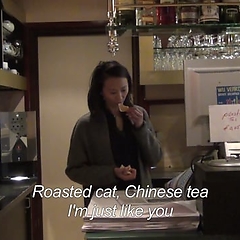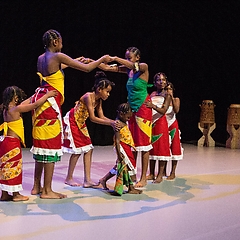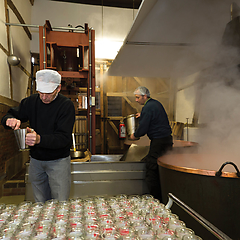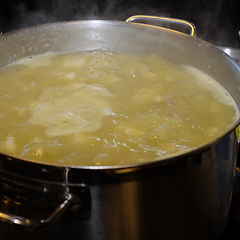I am the owner of the Zwols Balletjeshuis where, since 1845, Zwolle black "steken" (see history) and since the arrival of sugar beet, Zwolse balletjes have been produced. After the arrival of sugar beets, it became a "normal" candy, as well as 500 other sweets (eg The Hague Hopjes and Zeeland Babbelaars). Currently, the Zwolse balletje is the only piece of candy in the Netherlands that is still produced "at the shop" in the traditional way. The machine is outdated and is in the basement: these are the reasons why we only use the bakery once a week to "bake": the machine wears out quickly and cannot be used too often and the working conditions are far from ideal. I have several cash books in my possession that show the value and scope of the Zwolse Balletje.
Practitioners and stakeholders:
- I employ 2 stablers who work once a week to produce 'steken'.
- Zwolle residents and customers from the Zwolle area: the store used to be open on market days at 7 a.m. to give the people from the distant region who came to the (livestock) market the opportunity to do the weekly to buy steken.
- Many Zwolle companies and organizations that purchase the Zwolse balletjes as a promotional gift. The Zwolse Balletjeshuis is an institution in Zwolle and the most original Zwolle product.
- I as owner.
The building where the Zwolse Balletjeshuis is located is a building from the 17th century: first it served as a grocer and since 1845 as a bakery and shop. There have been 4 or 5 owners since 1845 who also lived in the building with their families, the men were the bakers and the women were in the store.
The "zwarte steken" were sweets which are made according to traditional methods in the cellar of the Ballet House in Zwolle and which were made until 1845 from cane sugar, the only sugar there was at the time. The cane sugar steken were used to sweeten the coffee and tea: a steek is placed in the cheek, the coffee / tea is drunk and runs along the steek making the coffee / tea sweetened: a luxury at the time. After the coffee / tea, the steek was taken from the mouth and stored for the second, third and so on cup of coffee / tea. To this day, there are still people from Zwolle who sweeten the coffee in this way. Nowadays the balletjes with beet sugar are produced as "steek-produced" sweets.



